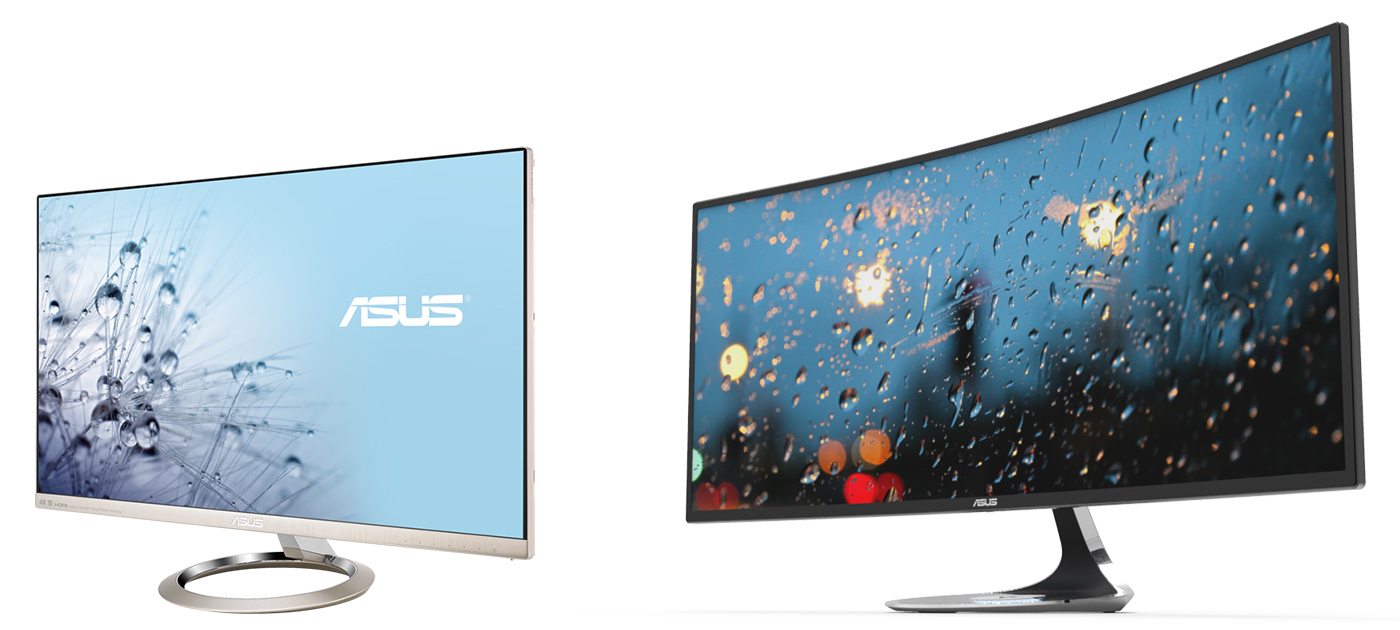The annual Consumer Electronics Show is happening right now in Vegas, and I spent a few minutes today looking at all the latest hardware and gadgetry developments which are supposed to define consumer technology in 2016. There look to be some iterative improvements to car dashboards and laptops1 , and final a push towards getting VR out the door, but nothing particularly eye-opening — though perhaps it also speaks to the declining stature of CES itself.
I was initially disappointed in not finding any huge upgrades in the computer monitor space; specifically, a 4K or “5K” (a la the 5K iMac retina) curved monitor with a 21:9 aspect ratio. We actually already have both 4K and 21:9 computer monitors available now; the former are usually 27” with a Thunderbolt 2 connection to satisfy the bandwidth requirements, the latter usually a giant curved 34” piece of glass. For instance, Asus is showing off these monitors separately:
In my mind, combining a retina-esque resolution on a super-wide cinema-optimized screen would be the best of both worlds. But, no manufacturer seems to want to put out such an amalgamation, likely for good reason: there’s no resolution standard for an ultra-wide high-pixel-count screen that big, the bandwidth and processing requirements would be tremendous, and the demand given the costs would be quintessentially niche. We’re at least a few more years away from 4K being pervasive.
Stepping back for a moment, though, the primary advantage of a high-resolution display is pixel clarity, which is most pronounced in text. I suspect this was one of the factors in the one-upmanship of screen resolutions in smartphones and tablets, while desktops and laptops lag — not only are smartphones a bigger market, but people read more now on phones than on PCs, and sharper text matters more on portable devices2.
Nowadays, computer monitors have taken on a different role as the personal computer has taken on a different role. The widescreen is amazing for movies and games, but less useful for most types of work. Big monitors are tremendously useful and valuable for graphics design and coding, but in these cases I think a regular, 16:9, 4K monitor is just as good. In fact, readable text requires an optimal line length, which makes the widescreen’s oversized aspect ratio less meaningful.
So I think I’m going to stick with upgrading to a 34” widescreen gaming monitor sometime this year, and just on reading on my iPad.





